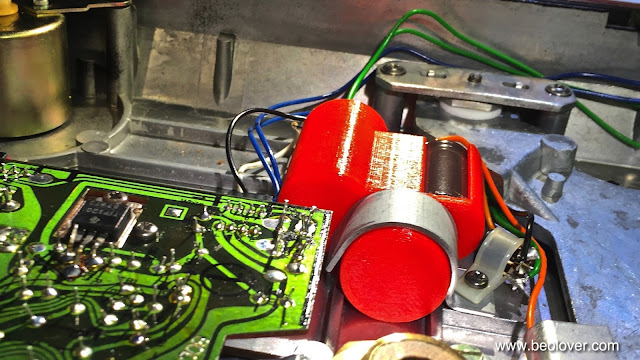My current Beogram 4002 (5513) restoration has come to an end. I did the final adjustments I adjusted the platter height and did the sub-chassis alignment. There are two videos on my YouTube channel that show how to adjust the platter bearing and the subchassis (in a Beogram 4000, but the process is very similar in the 4002).
Then I performed the arm lowering limit adjustment. There is another video on my youTube channel that shows how to adjust the lowering limits. This is an important adjustment to make since it can help protecting the cantilever in case of a record detection malfunction. The record detection circuit is not able to detect a light sensor failure by design and therefore if this issue should occur, and the deck is started without a record, the arm would be lowered on the platter (a painful thought!). That is the reason that the 'ribs' on the platter are designed with lowered sections where the arm would lower for the different record sizes.
Here is an impression of the effect of the lowering limit protecting the needle from touching the lower parts of the ribs:
Once the arm lowering limit is set, the tracking force can be calibrated. There is also a video about this process. This shows the tracking force gauge in action during the adjustment:
And then it was finally time for a test of this beautiful Beogram 4002! I selected a recent acquisition to my rapidly growing selection, Freddie Hubbard's "The Love Connection". In my opinion a great record. Unfortunately, it is widely derided for being too 'pop' and having too many pleasing melodies. Surely, it is not real jazz in a traditionalist interpretation of the genre, but it is absolutely great music. I even like Al Jarreau on "Little Sunflower" (I am not usually a fan of his own records). Check it out! Most of the tracks are on YouTube. This is the link to Little Sunflower. Now if they only had come up with a less tacky album cover...;-):
At any rate, this Beogram 4002 looked and sounded great while playing this album via the Soundsmith SMMC20 EN cartridge that came with it from ebay:
Time to send this beauty on to its new owner!

















































